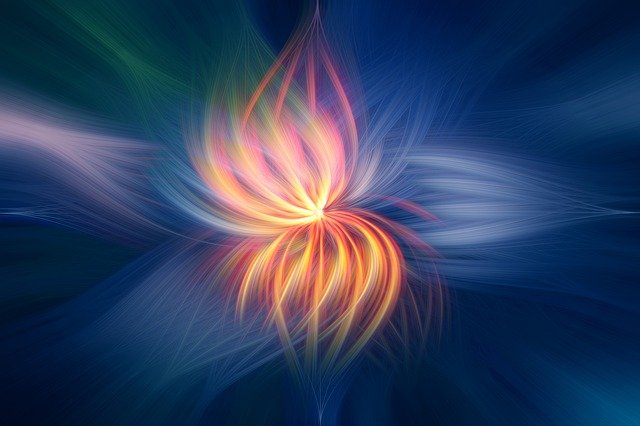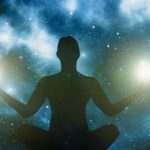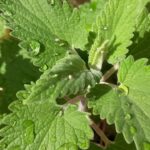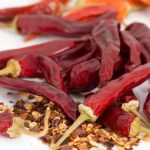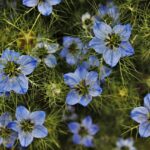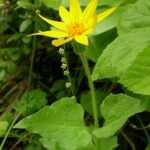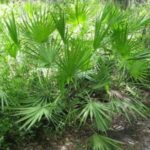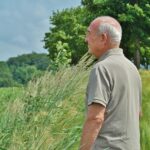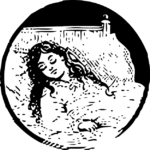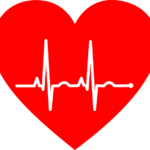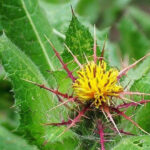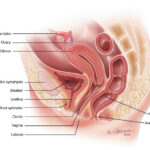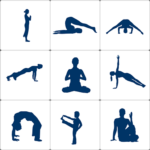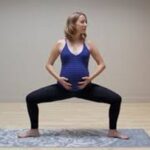Yoga – the Ageless Science of Connection through Body, Mind and Breath
The concept of prāṇa is an important component in the practice of yoga. Most often translated as “life force” or “breath,” prāṇa is associated with both the breath and the subtle, vital energy that gives us life. However, like most Sanskrit terms, this word can be used in several contexts, all having to do with how we receive and use (or move with,) universal vitality. Today we will discuss the idea of prāṇa and how it relates to āsana (the physical postures) of yoga.
What is Prāṇa?
The word prāṇa comes from the root words pra and ana. Pra means before or forward, implying motion. Ana has two meanings, breath and that which animates or brings to life. One great sage summed up the meaning as “energy combined with consciousness.” Prāṇa is an intelligent self-aware, energy that moves with purpose and is not governed by anything other than itself.
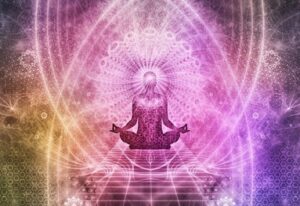
Life’s energy is everywhere. Inside and out, up and down, universal and personal. Everything, all parts of life, work together from the smallest molecule to the largest galaxy. Prāṇa, the universal life force, is everywhere.
As humans, we take vitality into our bodies in a variety of ways. Primarily following the breath, we also receive life’s energy through food, water, air, sunlight, relationships, and our environment. It enters us though our senses and is contained in the elements. Every level or part of the human organism is imbued with prāṇa. The life force is present in every cell, every space, and every dimension.
Nādīs – Channels for the Energy of Life
Inside human anatomy, prāṇa flows through a system of channels called nādīs (pronounced naadee.) Ancient sages described nādīs as microscopic tubes; their purpose is to circulate the energy of life. Some texts say there are 72,000 nādīs in the body; some say there are 72,000 on each side of the body. The number is unimportant, what matters is that this system has a form through which vitality is delivered in predictable ways.
The nādī system has 3 main channels, called iḍa, piṅgala and the ṣuṣumṇā (shushumnaa.) These three main branches or channels begin connected at, and with, the mūlādhāra (moolaadhaara) or root cakra. They then crisscross without intersecting, 5 times on their way up the body to end at each nostril. Piṅgala has its mouth at the right nostril and iḍa at the left nostril. The ṣuṣumṇā begins at the root cakra and continues up the center to the crown of the head. The nādīs do not intersect, instead they travel or flow near the back of the body close to the spine. Where each passes the others is a cakra (pronounced chakra.) The word cakra means wheel. Cakras are major centers of activity on both physical and energetic levels. (We’ll get more into this later.)
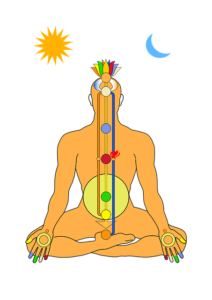
The Flow of prāṇa
The flow of prāṇa is like a river. We cannot control the flow of the river. We instead make space for the prana to flow into the areas we would like. Much like an irrigation system, we open a pathway for it to flow. When the path is clear, the water moves to fill the space. When the pathway is blocked, water or life energy, moves out of the channel. In the body that means vital energy leaks from its channel and away from the body.
One way to look at this subtle energy is in comparison to circulatory system. Every cell in our body needs oxygen. The blood and blood vessels are set up to serve this need. The nādīs are very much like this, except they are set up to deliver prāṇa, life’s animating force. Blood does its best work when it stays inside the blood vessels. We see problems arise when blood escapes, pools or bleeds out of their vessels.
Similarly, when the flow of prāṇa is smooth, we experience health and energy. Sometimes in life, prāṇa becomes stuck or blocked. This happens on an energetic level. When the flow of prāṇa is obstructed or agitated, it can move out of its channel. As a result, we may feel depleted, nervous, agitated, or scattered. Our body may get stiff and sore; or we might develop a variety of issues. Each individual and situation is unique.
Breath is a powerful tool when we want to change the flow of prāṇa. Not only is prāṇa and its movement linked with the breath, but breath is also linked with the physical body, the mind, emotions, and spiritual body. Adding intentional breathing to a physical practice makes it more conscious and therefore more powerful. When we direct our minds to a specific area, bringing a more intentional focus, we bring prāṇa to that area.
Āsana as a Tool for Moving Prāṇa
One of the functions of āsana is to move prāṇa to different parts of the body. One goal is to harness life energy, while encouraging its smooth, easy flow. A well thought out yoga practice can sooth difficulties while stimulating areas that need it. When this happens, we feel potent, grounded, healthy, harmonious, and energetic.

The types of poses and how we preform them is important. We want to work with the life force intentionally, with calm, clear and peaceful attention. When preformed in a stable, strong, comfortable, and relaxed way, our focus goes inward, supporting our mind and body while stabilizing our emotions. If our āsana isn’t systematic, or when we push too hard, prāṇa can become agitated, causing it to leave the nādīs and become scattered or dispersed.
It’s like taking on too many responsibilities all at once, our energetic body doesn’t know where to place its attention. As a result, we can become overwhelmed. Everyone handles the feeling of overwhelm differently. Some may feel scattered, angry, or impulsive. Others may have difficulty concentrating, lack strength, have pain, or experience ill health. Every response is personal.
Look Beyond the Physical
The deeper effects of yoga āsana aren’t always felt or recognized immediately and can manifest on any level or all levels at once. (See Yoga Āsana and the Pañcamaya model for more information.) One great teacher, (Mr. TKV Desikachar) used to say, “You know your yoga is working if your relationships are improving.” Relationships, including those with ourselves, loved ones, friends, family, and our god are powerful indicators as to whether your practice is working.
Even when the practice feels great at the time, or right after, look for more subtle effects further down the line. Later that day or sometimes the next day, seemingly unrelated, accumulative outcomes can be experienced. Prāṇa is subtle. When a practice is undertaken on a regular basis, these subtle effects become even more pronounced. Though, others may notice the changes before you do.
The Role of a Teacher
Working with a teacher is a good idea because, as individuals, we don’t usually recognize when or how we are out of sync. Like attracts like. When we are out of balance, we are drawn to things that make us more out of balance. It feels good at the time, yet over the long term (and sometimes the short term,) it can be like adding fuel to the fire, causing more difficulties. When we are in harmony, we are drawn to things that keep us in a good space. A teacher can help us recognize these patterns in ourselves and offer tools to create new healthier patterns.
Conclusion
The systematic practice of āsana, that is conscious, well-planned physical movement, combined with breath and mental attention, is a perfect tool to bring harmony into your life. The first step is to identify where you want to go. Once the direction has been identified, tools can be implemented to systematically move in that direction.
More about prāṇa
A practice of yoga that involves the use of physical postures to move prāṇa is based on 2 separate models of subtle anatomy, the cakra system and the prāṇa vāyu system. Both models explain how individual and combined tools (including the physical postures) work on subtle levels to facilitate the highest level of health and wellness possible. Stay tuned, we will be discussing them next.
Yearning for more? Read our previous post in the yoga āsana series “Pañcamaya as it relates to Āsana.“
Thank you for reading.
About Annie Jones

Annie’s main educational background is in traditional and therapeutic yoga, herbalism, Vedic chanting, and Ayurveda. She is a Clinical Herbalist with more than 35 years’ experience, and a Yoga Therapist and Teacher in the linage of T, Krishnamacharya and TKV Desikachar. Annie is a registered Yoga Teacher with the Yoga Alliance, E-RYT 500, YACEP, RCYT, and is a Certified Yoga Therapist (C-IAYT) with the International Association for Yoga Therapists. She is also Certified as a Vedic Chanting Teacher by the Krishnamacharya Yoga Mandiram in Chennai, India.
Annie offers individual yoga therapy and herbal health consultations. She is available for a variety of experiential, educational and transformational workshops in the fields of yoga and holistic healing.
Further Reading
References
Bossart, Chase MA; The Yoga Tradition, Yoga Bodies, Yoga Minds, How Indian Anatomies form the foundation for healing; International Journal of Yoga Therapy-no17, 20017
Desikachar, Kausthub with, Bossart, Chase and Liz Bragdon; Yoga of Healing: Exploring Yoga’s Model for Health and Wellbeing; International Journal of Yoga Therapy – Vol 15, 2005
Pandit Rajmani Tigunait PhD; Prāṇa, Understanding the Life Force; Himalayan Institute, Wisdom Classics, 2018
Disclaimer
The statements and ideas presented here are not intended to diagnose, treat, cure, or prevent any disease or condition. They have not been evaluated by the FDA. All ideas presented are for the sole purpose of education. To help you take control of your own health. If you have a health concern or condition, consult a physician. We suggest that you always consult a medical doctor before modifying your diet, using any new product, drug, supplement, or doing any new exercises.
These statements and products have not been evaluated by the FDA. They are not intended to diagnose, treat, cure, or prevent any disease or condition. If you have a health concern or condition, consult a physician. Always consult a medical doctor before modifying your diet, using any new product, drug, supplement, or doing any new exercises.
Herbs taken for health purposes should be treated with the same care as medicine. Herbal remedies are no substitute for a healthy diet and lifestyle. If you are serious about good health, you’ll want to combine diet, exercise, herbals, a good relationship with your doctor and a generally healthy lifestyle. No one of these will do it alone.
This information is designed to be used as part of a complete health plan. No products are intended to replace your doctor’s care, or to supersede any of his/her advice or prescriptions.

